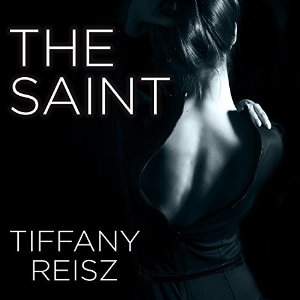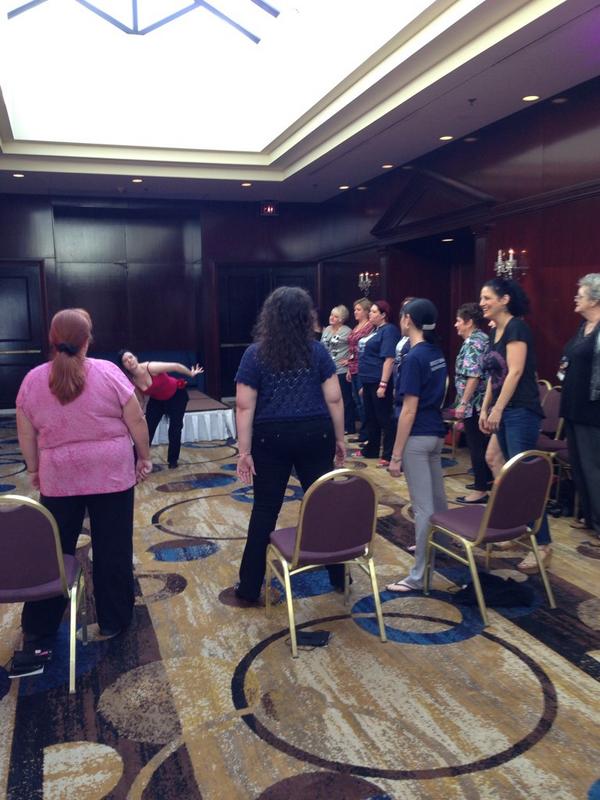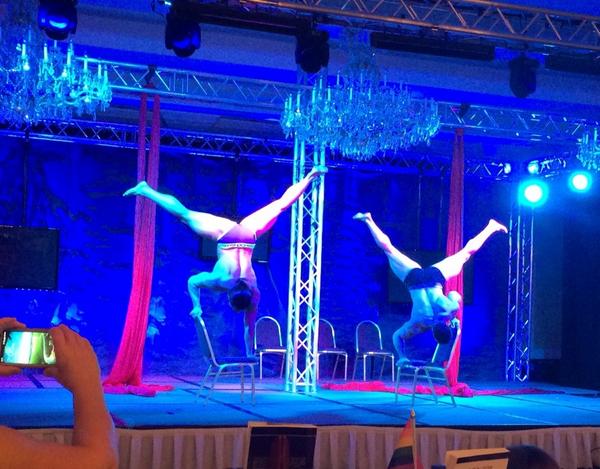I’ve had this post sitting around for six weeks or so since I last modified it. About time to publish it, right? I was talking with a friend at dinner, then realized, “Gosh, if I’d published this post, she’d already know.”
I really think New Adult Romance is the killer category for indie publishing. It’s certainly one in which I’ve found a some great books, though several of those have been picked up by mainstream publishers after initial publication.
The basic romance formula is simple: two people (or, sometimes, more than two people) who have various obstacles that prevent them from having the One Great Relationship, who overcome those obstacles because the other person (or people) change them enough.
Not so easy to write, though.
Here’s some I’ve loved.
Sarina Bowen, The Year We Fell Down
Linky link.
I picked this one up based on the DA review.
She’s a varsity hockey player who’s had a career-ending injury. He’s a hockey player who fell off a climbing wall while he was drunk off his ass, and he’s taking the year off to recover.
“Instead, we went into the hallway together in silence. But there, my reverie was broken by the sight of a guy hanging up a white board on the wall outside of his door. My first glimpse was of a very tight backside and muscled arms. He was attempting to tap a nail into the wall without letting his crutches fall to the ground. “Damn,” he said under his breath as one of them toppled anyway.
And when he turned around, it was as if the sun had come out after a rainy day.
I really felt her frustrations, being that person who’s often sitting in a corner at parties because I can’t stand for very long. And yet, she doesn’t let you feel sorry for her, because she mostly doesn’t feel sorry for herself.
Most importantly, she never feels that she’s not good enough for the guy in question (which is one of my pet peeve romance tropes). Meanwhile, he’s still got this sucktastic relationship with a woman who needs a man with an expense account, and he knows he’s not “good enough” for her. In fact, the reverse is true.
This one’s still an indie book, and I want to add: it’s one of the cleanest (copyediting-wise) I’ve seen from any publisher. Kudos.
Sarina Bowen, The Understatement of the Year
Linky link.
This is the third novel (fourth book) in the Ivy Years series. I really loved the second book also. The novella’s fine, but this book is what really stands out of the later books in the series.
I’ll just let her tell it:
Five years ago, Michael Graham betrayed the only person who ever really knew him. Since then, he’s made an art of hiding his sexual preference from everyone. Including himself.
So it’s a shock when his past strolls right into the Harkness College locker room, sporting a bag of hockey gear and the same slow smile that had always rendered Graham defenseless. For Graham, there is only one possible reaction: total, debilitating panic. With one loose word, the team’s new left wing could destroy Graham’s life as he knows it.
This book brought back what it was like to be the straight best friend of a young, closeted gay guy who was trying to navigate his sexual preference for the first time.
If I had to pick my favorite book of the year, so far the above two are tied. I’ve got quite a few on my shortlist, though.
Katy Evans, Real
Linky, link.
This one I found on the iBooks bestseller charts and downloaded a sample, and it’s one of those that was picked up by a big publisher.
I don’t normally like books about fighters because I’m really seriously not into the alpha men who fight for a living. Except in books, apparently.
“I dare you to look at him and tell me you wouldn’t do anything for that man.”
“I wouldn’t do anything for that man,” I instantly repeat, just to win.
“You’re not looking!” she squeals. “Look at him. Look.”
She grabs my face and swings my gaze in the direction of the ring, but I start laughing instead. Melanie loves men. Loves to sleep with them, stalk them, drool about them, and yet when she catches them, she can never really hold onto them. I, on the other hand, am not interested in getting involved with anyone.
Not when my romantic little sister, Nora, has had enough boyfriends, and drama, for both of us.
I stare up at the stage as the guy whips off the satin red robe with the word RIPTIDE on the back, and the spectators stand screaming and cheering as he slowly turns to acknowledge them all. His face is suddenly before me, illuminated by the lights, and I just stare like an idiot from my place. My god.
My.
God.
Dimples.
Dark scruffy jaw.
Boyish smile. Man’s body.
Killer tan.
A shiver shoots down my spine as I helplessly drink in the entire package everyone else seems to be gaping at.
Remy’s not neurotypical, and I loved the descriptions of the nuances of his character. I think once she labels it, it feels less real, so I’m glad that is very minimized. It’s not “he’s got X,” it’s all in his behavior.
There are aspects of this relationship that are troubling. Sure, she’s got her dream job and he’s got his, but the relationship is so tightly interwoven that it just feels like it can’t help but being unhealthy. And yet, it shifts in the second book, which I’m now reading.
What I love, though, is that no one is giving up their careers. Unlike a lot of other romance books, their particular careers mesh.
After having read all the books now out, I’ll add: they all three work, and the book from his POV (Remy) helps fill in the cracks.
Dear Author review.
Jay Crownover, Rule
Linky link.
I loved the first book, not as crazy about the subsequent books. Also wish there were a stronger command of language or, failing that, copyediting. Now that she’s got a major publisher, one would hope there’d be a larger budget for that. (Update: I just read the fish book, Rowdy, and it didn’t have the same problems.)
The characters, however, are broken in just the right ways. It’s told from alternating first POV, which I personally like a lot when it’s done well.
She’s always been in love with him, but he goes through women the way some women go through Kleenex. He’s always been interested in her, but believes she was the girlfriend of his twin who committed suicide—and therefore off limits.
“You’re going to get all that junk that’s in your hair all over my window.” Her voice—all cigarettes and whiskey—didn’t match the rest of her, which was all champagne and silk. I had always liked her voice; when we got along I could listen to her talk for hours.
“I’ll get it detailed.”
She snorted. I closed my eyes and crossed my arms over my chest. I was all set for a silent ride, but apparently she had things to say today, because as soon as she pulled the car onto the highway she turned the radio down and said my name. “Rule.”
I turned my head slightly to the side and cracked open an eye. “Shaw.” Her name was just as fancy as the rest of her.
Despite the fact that this is weaker in some respects than other books I’m listing, it was my gateway drug into new adult romance.
Kylie Scott, Lick
Linky link.
One of my sweet spots is a reader is rock ‘n roll heroes.
It’s a variant on the old “secret wedding” theme: in the book’s opening, the heroine wakes up married. Hilarity ensues.
“Something winked at me from my left hand, snagging my attention. A ring, but not just any ring. An amazing ring, a stupendous one.
“Holy shit,” I whispered.
It couldn’t be real. It was so big it bordered on obscene. A stone that size would cost a fortune. I stared, bemused, turning my hand to catch the light. The band beneath was thick, solid, and the rock sure shone and sparkled like the real deal.
As if.
“Ah, yeah. About that …” he said, dark brows drawn down. He looked vaguely embarrassed by the ice rink on my finger. “If you still wanna change it for something smaller, that’s okay with me. It is kinda big. I do get your point about that.”
I couldn’t shake the feeling I knew him from somewhere. Somewhere that wasn’t last night or this morning or anything to do with the ridiculous beautiful ring on my finger.
“You bought me this?” I asked.
He nodded. “Last night at Cartier.”
“Cartier?” My voice dropped to a whisper. “Huh.”
Unlike many of the others, this one started out with a major publisher and was never self-published.
Dear Author review.
H. M. Ward, a metric ton of books
Linky link.
There’s no easy way to say this other than be truthful: H. M. Ward writes my kind of crack. She could use a proofreader, though not as much as Crownover.
Ward’s best known for the (currently) 16-volume (each novella length) Arrangement series, but there are side series that are related, too.
The Arrangement
Avery’s a college student with an impossible work/courseload and too little money whose parents died in a car crash. She only has herself to rely on.
Sean’s an incredibly rich (of course) guy who wants a certain kind of relationship. In the opening, someone steals Avery’s car as she’s trying to spray-start it. He helps her go after the thief, which is how they meet.
“Does your car always do that?” A pair of blue eyes meets mine and the floor of my stomach gives way. Damn, he’s cute. No, not cute—he’s hot.
“Get jacked? No, not always.”
He smiles. There’s a dusting of stubble on his cheeks. I can barely see it because of the helmet. He raises an eyebrow at me and asks, “This has happened before, hasn’t it?”
More times than you’d think. Criminals are really stupid. “Let’s just say, this isn’t the first time I had to chase after the car.”
Melony, Avery’s closest friend, takes her for a job interview. Avery thinks it’ll be for something like hotel clerk, but no, it’s for becoming a call girl. The interviewer, Miss Black, shows Avery the photo of a new client. It’s Sean.
Just one problem: Avery’s still got her v-card. Will she? Won’t she?
This series takes some incredibly wild-ass turns, and I loved it. Some of them I saw wind up like clockwork, and some surprised me. I can’t wait until the whole thing’s finished and I can re-read it from scratch.
The Secret Life of Trystan Scott
This is a five-part young adult story of Trystan Scott’s high school years. It’s set three years before The Arrangement. He has a pretty awful home life, but no one quite understands how broken he is. Fortunately, things improve for him. Eventually.
Trystan isn’t a Ferro, but he later becomes a good friend of the family and appears in the later Arrangement books.
There will be a later Trystan Scott series contemporary with The Arrangement; the first volume is due out soon.
Scandalous
Scandalous is a two-volume book that’s not Ferro, but is mentioned in the Ferro series. He’s an artist who paints nudes. She got away from him and has been a preacher. She becomes his muse. Nice inherent conflict. Really loved it.
The Proposition
After her father dies suddenly, college student Hallie writes a torrid erotic novel about the love she lost: Bryan Ferro, the man she loved, lost, and never told anyone about. Catch is, she’s now with Neil, who’s just Mr. Blah, and fears that other people will think the novel’s about his relationship with Hallie.
The novel has attracted enough buzz that seven-figure offers are coming in, so Neil’s tune starts to change.
Bryan, however, hasn’t forgotten Hallie, and shows up in her life. Only he’s got secrets of his own.
Secrets & Lies
The first of this seven-part series is out.
Kerry’s luck is hilariously bad, from accidentally winding up with a school bus to having her possessions shipped accidentally to Guam. She’s also wound up suckered into nude modeling, and, well, her one-night stand blows her off.
Until he doesn’t.
Nathan is trailing me and smiling that cocky grin that guys wear when a woman shoots them down. He mirrors my pose, which makes his arms look lickable. “Exactly what part of Hell has to freeze over before you give me another try? The foyer? The basement?”
I don’t want to laugh, but the idea of Hell having a basement is funny. I get a picture in my head of an old guy burying bodies at the bottom of a staircase, next to a creepy furnace. It amuses me. “Level nine, ya know, the basement.”
He presses his hand to his heart. “That’s a long ways down.”
“Yes, but the fall was fast. I bet you hit your ass on the way down.”
Damaged
Sean’s younger brother Peter has given up the Ferro family fortune and the strings that attach it, and gone and gotten himself a professorship. Sidney has been a grad student and finally agrees to a blind date set up by a friend, only she sees Peter on the way in and thinks that’s her blind date.
Her actual blind date is an amazing jerk, so Sidney dumps him. She heads to the parking lot, and hot guy is out there. His car won’t start.
“He watches me as I try to crank the engine. It doesn’t start. I look at the little gauges and notice the battery. He’s standing next to me now. “So, you’re a mechanic?”
I shake my head, “I just pretend to be. It makes for more interesting evenings.” I grin at him, not sure what’s come over me.
One of the things I like about H. M. Ward’s women: they’re not stereotypical.
Stripped
Black sheep of the Ferro family Jon—who until now has been known for banging his father’s endless series of younger mistresses—discovers that his long-lost love is working in a strip club. The one who got away was Cassie. The story slips between the narrative past, when they met, and the narrative present, when they meet again.
Jonathan trails behind me. “You’re the first chick who’s shot me down.”
“Good, then maybe you’ll learn something.”
Jonathan stops walking for a second and then races after me. “I’m sorry, I didn’t realize you were trying to teach me a lesson.” The infuriating smirk on his lips is still there, bright and beautiful. “You see, I was distracted by your perfectly sinful body. My brain actually exploded back there when you said you only use it for good, which isn’t good at all, since that makes you off limits.”
I’m smiling, and trying to suppress the grin, but I can’t help it. I reach into my purse and pull out a Kleenex. I hold it over my shoulder for him. “Here’s a tissue, go clean it up.”
The Wedding Contract
The rare one-volume piece from Ward. It’s a fun read about rival wedding photographers Nick Ferro and Sky, and draws from Ward’s time in the trenches in the wedding industry.
Suggested Reading Order for Ferro Books
Courtesy of the Ferroholics on facebook.
SIMPLIFIED READING ORDER
Scandalous 1 & 2 (not Ferro : mentioned in Stripped)
The Secret Life of Trystan Scott 1 – 5 (Not Ferro: becomes character in Ferro books)
The Arrangement 1 – 6
Damaged 1 & 2
The Arrangement 7 – 11
Stripped
The Proposition 1 – 4
The Arrangement 12 – 14
The Proposition 5
The Arrangement 15 -16
The Wedding Contract
Secrets and Lies 1
Second Chances (Not Ferro: there’s a brief Ferro cameo)
Secrets
Five-book set that’s finished. Anna’s a photographer who plans to deliberately blow a job interview with Cole so she can work at a different studio instead. He’s cleverer than she is and hires her anyway.
Read More













